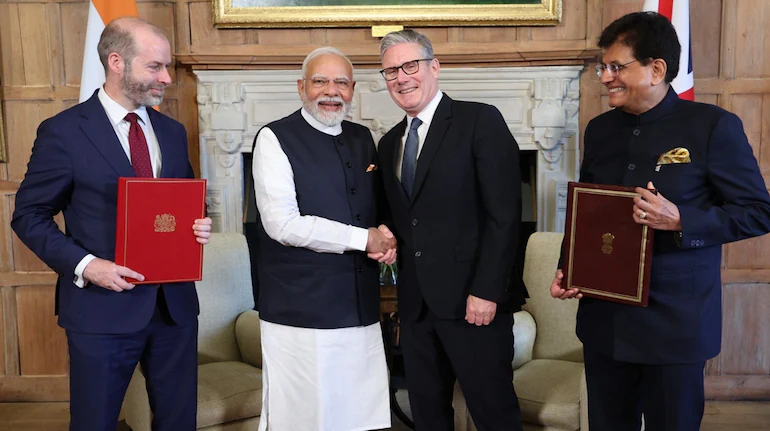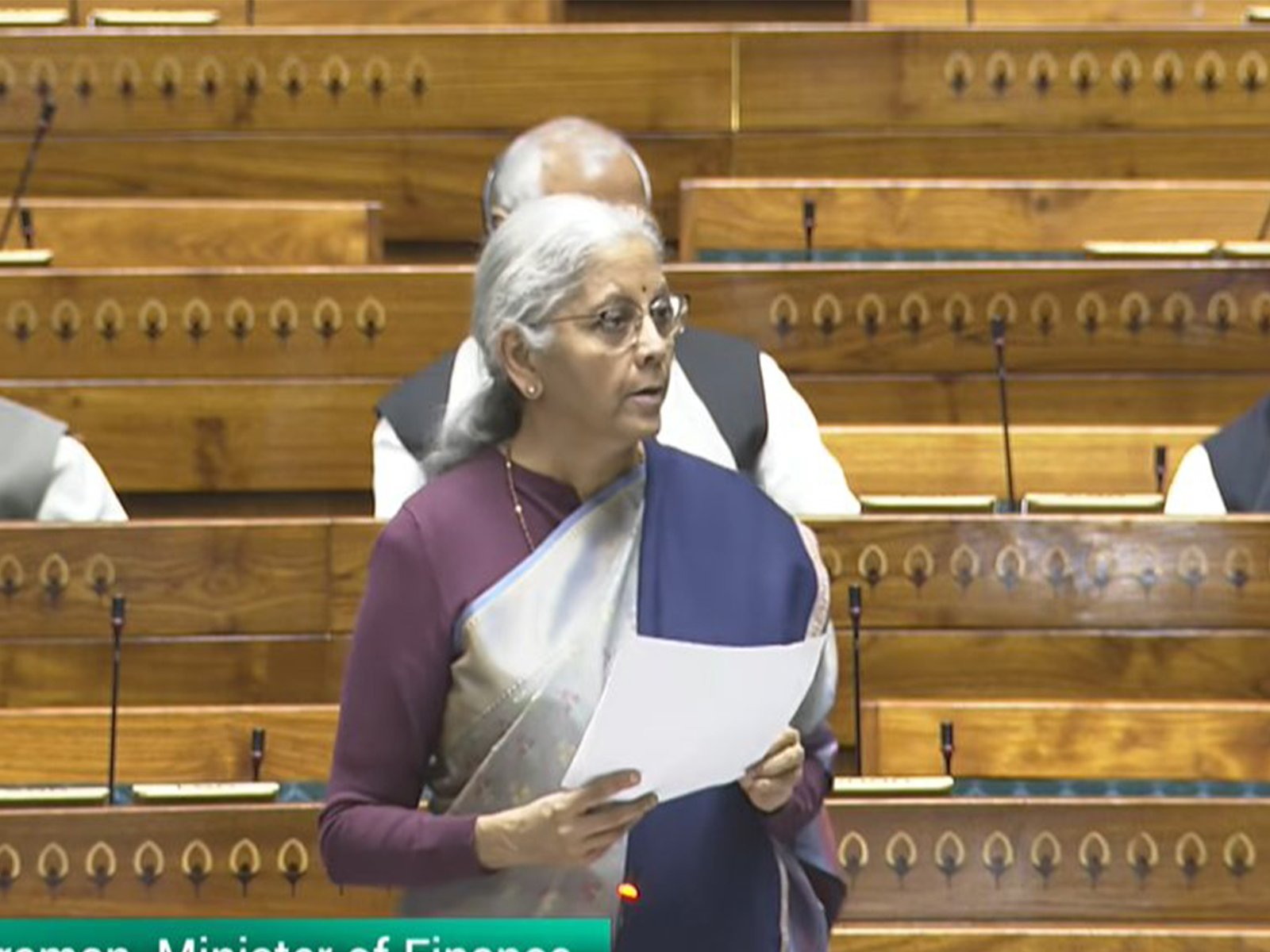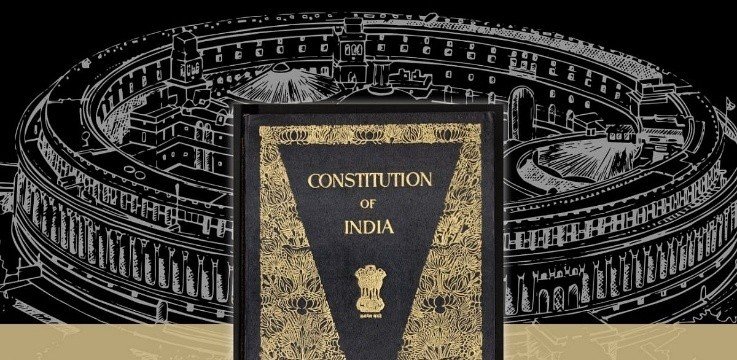Why in the News?
- India and the United Kingdom signed the Comprehensive Economic and Trade Agreement (CETA) in July 2025, marking a major milestone in bilateral relations.
- British Prime Minister Keir Starmer’s visit to Mumbai in October 2025 signals the intent to deepen ties in trade, technology, and security.
- This comes against the backdrop of geopolitical realignments, global economic fragmentation, and regional trade blocs.
Why India and the UK matter to each other
- India and the United Kingdom have had a long relationship from the colonial era to today’s partnership of equals. In recent years, both countries have realised that they need each other more than ever:
- India is one of the fastest-growing economies, a hub of young talent, and a key Indo-Pacific power.
- UK is a financial and technological hub, seeking strong partners after Brexit (Britain’s exit from the EU in 2020).
- So, both countries began working towards a comprehensive trade and strategic partnership.
The Big Step: Signing of CETA in 2025
- In July 2025, India and the UK signed the Comprehensive Economic and Trade Agreement (CETA).
- CETA is a mega trade deal that reduces import duties (tariffs), makes investments smoother, and increases cooperation in many sectors.
- The goal is to double trade between India and the UK by 2030.
- The UK is already the 6th largest foreign investor in India (nearly 5% of FDI).
- With CETA and the upcoming Bilateral Investment Treaty (BIT), these inflows will increase further.
What will each side gain?
- India will export more textiles, farm goods, and medicines to the UK at lower tariffs.
- UK will get cheaper access for Scotch whisky, automobiles, and other premium products.
- UK firms can use India as a manufacturing hub and export to global markets.
- Indian firms will gain from technology transfer, global standards, and better market access in Europe.
- Unlike old trade agreements, CETA is not just about trade, it also includes investment partnership and strategic alignment like technology and defence.
Making Life Easier for Professionals: The DCC
- Along with CETA, another important pact, “the Double Contributions Convention (DCC)” was signed.
- Normally, Indian professionals working in the UK had to pay social security contributions (like pension or insurance) both in India and in the UK.
- Under DCC, they don’t have to pay double contributions for 3 years.
- This means cheaper costs for Indian workers and British employers, and smoother mobility of skilled talent.
- This is important because India’s IT and services professionals are the backbone of Indo–UK economic links.
Looking Beyond Trade: Vision 2035
- Trade is only one part of the relationship. In July 2025, both countries launched the Vision 2035 Roadmap.
- It includes cooperation in:
- Defence – Joint development and co-production of weapons and platforms (example: Defence Industrial Roadmap).
- Technology – Working together in AI, quantum computing, semiconductors, advanced materials, critical minerals. (This is covered under the Technology Security Initiative (TSI) launched in 2024).
- Climate and Education – Collaboration in green energy, climate action, and student exchange.
- Mobility – Making it easier for professionals and students to move between the two countries.
- The idea is that India–UK relations should not remain limited to trade, but should become a comprehensive strategic partnership.
Why did India and the UK push so hard for this deal in 2025?
- The world economy is fragmenting into smaller regional trade blocs.
- Supply chains are shifting from efficiency to resilience and security (countries don’t want to depend only on China).
- Both India and the UK want to position themselves as reliable partners in this new order.
- For Britain, India offers:
- A huge consumer market.
- Opportunities in green finance and digital innovation.
- A strong partner in the Indo-Pacific.
- For India, UK offers:
- Advanced technology.
- Foreign investments.
- Defence and security collaboration.
- More opportunities for Indian workers abroad.
Challenges and Way Forward
| Challenges | Way Forward |
| Ratification delays in CETA | Expedite parliamentary approvals in both countries |
| Regulatory and non-tariff barriers | Align standards, simplify compliance, strengthen dispute settlement mechanisms |
| Protectionist pressures in sensitive sectors (agriculture, services) | Phase-wise tariff liberalisation with safeguard clauses |
| Unequal benefits across industries | Support vulnerable sectors through transition funds and skill development |
| Implementation of technology/security cooperation | Institutionalise joint working groups, regular high-level reviews |
Conclusion
The signing of CETA and related frameworks marks a turning point in India–UK relations. By combining trade liberalisation with strategic cooperation in defence, technology, and mobility, the partnership goes beyond commerce. It has the potential to position India and the UK as key players in shaping a resilient, technology-driven global order.
| EnsureIAS Mains Question Q. The India–UK Comprehensive Economic and Trade Agreement (CETA) reflects a new model of trade partnership. Discuss its significance for India in the context of technology, investment, and global geopolitics. (250 Words) |
| EnsureIAS Prelims Question Q. Consider the following statements about the India–UK Comprehensive Economic and Trade Agreement (CETA): 1. The agreement is expected to double bilateral trade by 2030, with tariff reductions for both sides. 2. The Double Contributions Convention (DCC) will exempt Indian professionals in the UK from double social security contributions. 3. The Technology Security Initiative (TSI) between India and the UK focuses mainly on renewable energy cooperation. Which of the above statements is/are correct? Answer: A (1 and 2 only) Statement 1 is correct – CETA aims to double bilateral commerce by 2030, lowering tariffs on goods like textiles, pharmaceuticals, Scotch whisky, and automobiles. Statement 2 is correct – The DCC exempts Indian professionals from double contributions in the UK for 3 years, easing mobility. Statement 3 is incorrect – TSI covers AI, quantum computing, semiconductors, critical minerals, and advanced materials, not mainly renewable energy. |
Also Read | |
| UPSC Foundation Course | UPSC Daily Current Affairs |
| UPSC Monthly Magazine | CSAT Foundation Course |
| Free MCQs for UPSC Prelims | UPSC Test Series |
| ENSURE IAS NOTES | Our Booklist |





